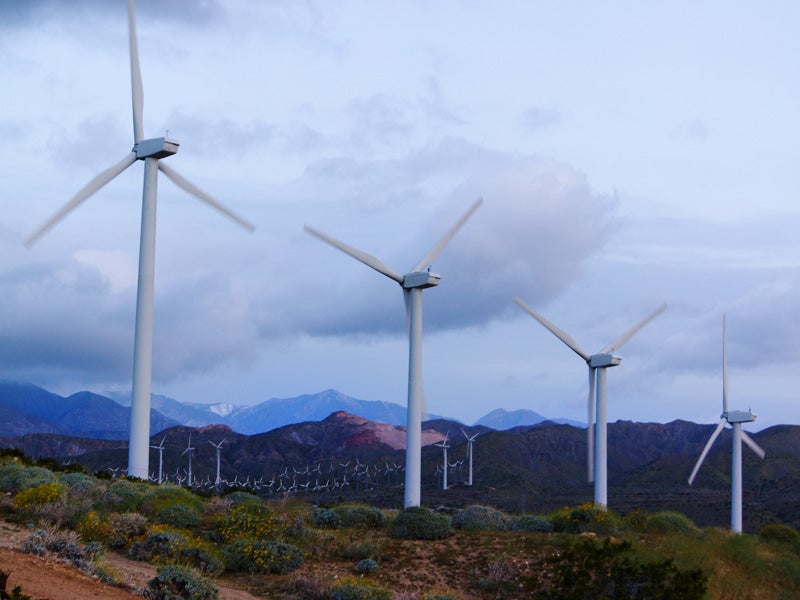Planning for California’s Clean Energy Future
A recent ruling in the California Public Utilities Commission’s long-term planning proceeding represents a step toward creating an electricity grid driven by clean energy.

This page was published 9 years ago. Find the latest on Earthjustice’s work.
California has been in the news recently for breaking clean energy records, and the California Public Utilities Commission is already planning for those clean energy figures to rise.
Every two years, the commission holds a proceeding to plan for the state’s energy needs over the next 10 years. The judge for the 2014-2015 iteration of this proceeding recently agreed with Earthjustice and our client, Sierra Club, and ruled that California does not have a pressing energy need that must be met in this proceeding. Instead, the next stage of the proceeding will address, among other things, ensuring system reliability as more renewable electricity is added to the grid. Earthjustice and Sierra Club have long advocated that new natural gas procurement is unnecessary and that the commission should devote more effort to developing the clean energy grid of the future.
This ruling represents yet another step forward for the commission: up until the 2012-13 proceeding, these planning proceedings typically focused on establishing how much electricity is needed and then procuring that electricity by building additional dirty fossil fuel power plants. In the 2012-13 proceeding, the commission established a procurement amount for clean energy resources for the first time. In the 2014-15 proceeding, the commission recognizes the importance of planning for a grid with more clean energy resources, and has decided to devote this planning proceeding to that effort.
Planning for the future grid is important now because the current system is inefficient and hinders the growth of the clean energy sector. California is required to have enough energy available to supply everyone when demand is very high, so there is often surplus energy on the grid. At those times, the California Independent System Operator, which runs the state’s electrical grid, can direct power plants to reduce the amount of electricity they produce. If that does not reduce the total amount of available electricity enough, the state can also direct clean energy resources to shut down temporarily, a process called renewable curtailment. Renewable curtailment works as a stopgap measure to keep the system going, but it wastes valuable clean energy and jeopardizes California’s chances of meeting its greenhouse gas emission reduction goals. Flexible capacity resources, which are resources that can respond quickly to increases or decreases in electricity need, can help reduce the reliance on renewable curtailment.
Wisely, the commission has decided to forgo procuring unnecessary and polluting power plants and to instead tackle the factors that result in renewable curtailment. The next phase of the proceeding will focus on refining existing models so that they can be used to predict future flexible capacity need. It will also examine ways to reduce over-generation of electricity and other challenges arising from a growing proportion of clean energy resources on the grid. Through this work, the proceeding will begin to address the changes needed to reduce greenhouse gas emissions from electricity. There is still a great deal of work ahead to meet current and proposed climate goals, such as Governor Brown’s proposed 50% renewable energy target by 2030. Still, thanks in part to advocacy by Earthjustice and our partners, the commission is taking steps to adapt the electrical grid to the diminished role of natural gas as clean energy resources continue to grow.
Adenike was the Sr. Research & Policy Analyst / Advocacy Representative for the California regional office in San Francisco, CA, from 2012–2018. She analyzed technical data and policy to support litigation and administrative advocacy focused on air quality, clean energy, and environmental health.
The California Regional Office fights for the rights of all to a healthy environment regardless of where in the state they live; we fight to protect the magnificent natural spaces and wildlife found in California; and we fight to transition California to a zero-emissions future where cars, trucks, buildings, and power plants run on clean energy, not fossil fuels.
